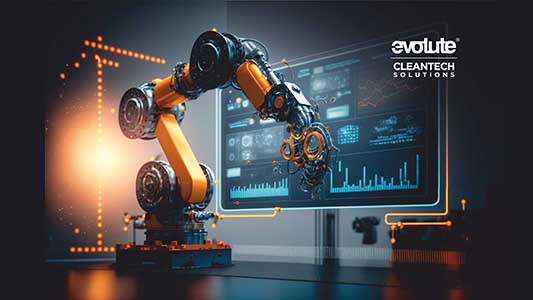The manufacturing industry has witnessed remarkable transformations over the years, evolving from manual labor to mechanization and eventually to automation. In recent times, the advent of Industry 4.0 has brought about a new era of manufacturing that harnesses the power of automation, data exchange, and advanced technologies. In this article, we’ll delve into the concept of Industry 4.0 and explore how automation is reshaping modern manufacturing, as well as what lies ahead in the world of manufacturing beyond Industry 4.0.
In the era of Industry 4.0, Electronics Manufacturing Services (EMS) and PCB Assembly have undergone transformative changes. The integration of advanced technologies like IoT, AI, and robotics has revolutionized the efficiency and precision of PCB Assembly processes. EMS providers now leverage real-time data analytics to optimize production, predict maintenance needs, and ensure consistent product quality. Through the seamless connectivity of smart devices and intelligent machines, Industry 4.0 has elevated Electronics Manufacturing Services and PCB Assembly to new heights of productivity, agility, and innovation.
Understanding Industry 4.0: The Fourth Industrial Revolution
Industry 4.0, often referred to as the Fourth Industrial Revolution, is a paradigm shift that combines digital technologies, automation, and real-time data analysis to create a smarter and more interconnected manufacturing environment. It represents the convergence of physical systems and digital technologies, allowing machines, processes, and data to seamlessly communicate and collaborate. The core idea is to create a smart factory that can autonomously make decisions and optimize production based on real-time data.

The Role of Automation in Industry 4.0
Automation is at the heart of Industry 4.0, driving efficiency, precision, and flexibility in manufacturing processes. From robotic arms on assembly lines to autonomous guided vehicles (AGVs) in warehouses, automation technologies are transforming every aspect of the manufacturing lifecycle. Here’s how automation is shaping the Industry 4.0 landscape.

Smart Manufacturing: Automation enables the creation of smart factories where machines are interconnected and communicate with each other. This allows for real-time monitoring, predictive maintenance, and rapid response to changing conditions.
Robotics and Cobots: Robots play a crucial role in performing repetitive and physically demanding tasks with high precision. Collaborative robots, or cobots, work alongside humans, enhancing efficiency and safety on the factory floor.
Data Analytics and AI: Automation generates vast amounts of data. By leveraging data analytics and artificial intelligence (AI), manufacturers can gain insights into production processes, identify patterns, and optimize operations for improved outcomes.
Additive Manufacturing: 3D printing is an automation-driven technology that allows for rapid prototyping, customization, and even production of complex parts with reduced waste.
Benefits of Automation in Modern Manufacturing
The integration of automation into modern manufacturing brings forth a plethora of benefits:
Increased Efficiency: Automation accelerates production processes, reduces cycle times, and minimizes downtime, resulting in higher overall efficiency.
Enhanced Quality: Automation ensures consistent quality by minimizing human error and deviations in manufacturing processes.
Cost Savings: While the initial investment in automation technology can be significant, the long-term cost savings are realized through reduced labor costs, minimized waste, and optimized resource utilization.
Flexibility and Scalability: Automation allows manufacturers to quickly adapt to changing market demands and scale production as needed.
Improved Safety: Dangerous and repetitive tasks can be handled by robots, reducing the risk of workplace accidents and injuries for human workers.
Beyond Industry 4.0: The Future of Manufacturing

As Industry 4.0 continues to shape the manufacturing landscape, it’s important to look ahead and anticipate the trends that will define manufacturing in the future:
Human-Automation Collaboration: The future will see an even greater collaboration between humans and robots, with humans focusing on tasks that require creativity, problem-solving, and decision-making, while robots handle routine tasks.
Edge Computing: With the rise of IoT devices, edge computing will become crucial. Data will be processed closer to the source, enabling real-time decision-making and reducing latency.
Sustainability and Circular Economy: Future manufacturing will prioritize sustainability by incorporating practices that minimize waste, optimize resource use, and promote recycling and circular economy models.
Personalization and Customization: Automation technologies will enable manufacturers to offer highly personalized and customized products to meet the diverse needs of consumers.
Ethics and Responsibility: As automation becomes more prevalent, ethical considerations such as data privacy, job displacement, and responsible AI usage will gain prominence.
Conclusion
The integration of automation into modern manufacturing, fueled by the principles of Industry 4.0, has ushered in a new era of efficiency, quality, and flexibility. As we move forward, the manufacturing landscape will continue to evolve, with automation playing a central role in shaping the factories of the future. Embracing these changes and anticipating the challenges and opportunities they bring will be key to thriving in the ever-evolving world of manufacturing beyond Industry 4.0.












